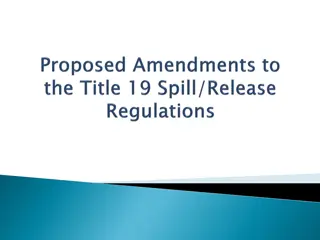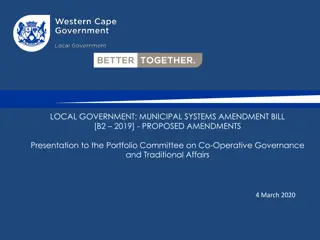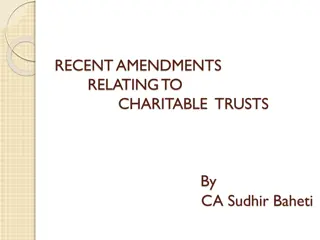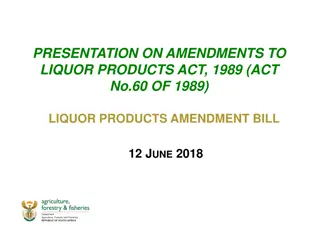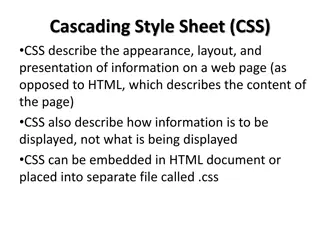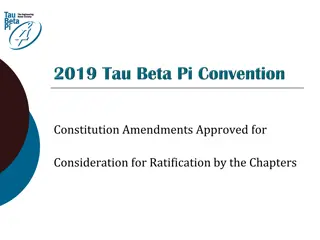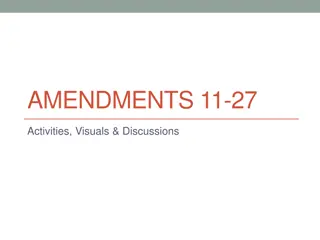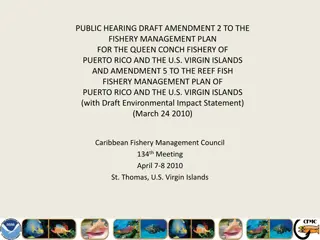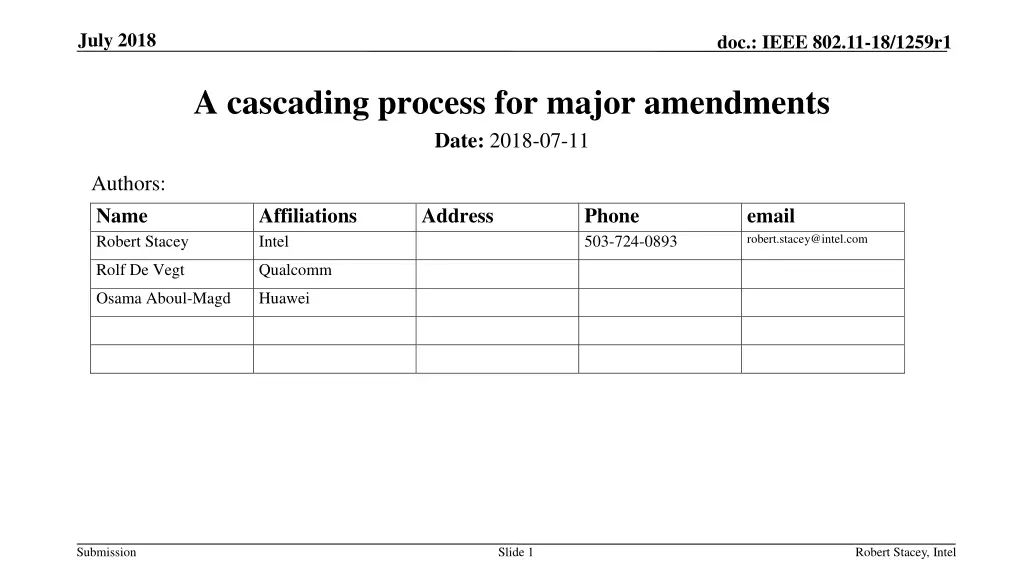
Cascading Process for Major Amendments in IEEE 802.11 Standards
Explore the cascading process for major amendments in IEEE 802.11 standards, including timelines, development stages, and certification program launches. Gain insights into the evolution and complexity of 802.11 amendments over the years.
Download Presentation

Please find below an Image/Link to download the presentation.
The content on the website is provided AS IS for your information and personal use only. It may not be sold, licensed, or shared on other websites without obtaining consent from the author. If you encounter any issues during the download, it is possible that the publisher has removed the file from their server.
You are allowed to download the files provided on this website for personal or commercial use, subject to the condition that they are used lawfully. All files are the property of their respective owners.
The content on the website is provided AS IS for your information and personal use only. It may not be sold, licensed, or shared on other websites without obtaining consent from the author.
E N D
Presentation Transcript
July 2018 doc.: IEEE 802.11-18/1259r1 A cascading process for major amendments Date: 2018-07-11 Authors: Name Robert Stacey Affiliations Intel Address Phone 503-724-0893 email robert.stacey@intel.com Rolf De Vegt Qualcomm Osama Aboul-Magd Huawei Submission Slide 1 Robert Stacey, Intel
July 2018 doc.: IEEE 802.11-18/1259r1 Abstract Some history on 802.11 and Wi-Fi Alliance timelines Brief overview of 3GPP processes and timelines Motivate for 2-3 year release cadence Outline of a cascading process Submission Slide 2 Robert Stacey, Intel
July 2018 doc.: IEEE 802.11-18/1259r1 802.11ac process and timeline 11n Pub Sep 2009 2007 2008 2009 2010 2011 2012 2013 1.5 years May 2007 Nov 2008 5 years Nov 2013 VHT SG TGac ~2 years May 2009 Jan 2011 FR & EM ~1 year Sep 2009 Jan 2011 SFD Nov 2010 May 2011 Mar 2013 Nov 2013 D0.1 D1.0 LB: D1.0 D5.0 SB: D5.0 Pub 2 years 6 months 6 months VHT SG produced two PARs: 11ac and 11ad 11ac process started before 11n publication, but SFD development started late Submission Slide 3 Robert Stacey, Intel
July 2018 doc.: IEEE 802.11-18/1259r1 802.11ax process and timeline 11ac Pub Dec 2013 2013 2014 2015 2016 2017 2018 2019 1 year May 2013 May 2014 5.5 years Nov 2019 HEW SG TGax May 2014 ~2 years Jan 2016 EM ~1 year Jan 2015 May 2016 expected SFD Mar 2016 Nov 2016 Nov 2019 May 2018 May 2019 D0.1 D1.0 8 months D1.0 D3.0 D4.0 D5.0 SB: D5.0 Pub 6 months 2.5 years Spent a lot of time on EM Spent more time on draft than 11ac: 3.6 years vs 3 years Reflects greater complexity Submission Slide 4 Robert Stacey, Intel
July 2018 doc.: IEEE 802.11-18/1259r1 WFA certification launch dates 2007 2008 2009 2010 2011 2012 2013 2014 2015 2016 2017 2018 2019 11ax D3.0 May 2018 11ac D2.0 Nov 2012 11ac Pub Dec 2013 11n D2.0 Jan 2007 11n Pub Sep 2009 Draft N Jun 2007 Certified N Sept 2009 AC R1 Jun 2013 AC R2 Jun 2016 AX R1 Aug 2019 ~4 years (45 months) ~3 years (38 months) 3 years (36 months) ~2 years (27 months) Approximately 3 years between WFA certification program launches Each major 802.11 amendment spawned two WFA programs Submission Slide 5 Robert Stacey, Intel
July 2018 doc.: IEEE 802.11-18/1259r1 Observations on the major 802.11 amendments A major 802.11 amendment takes 6+ years to complete The process is effectively serialized A new SFD is started after the last amendment is published There is some overlap with new PAR development and last sponsor ballot SFD development takes around 1 year Draft development takes 3 to 3.6 years 6 8 months for the TG to develop the first draft for WG letter ballot 2 2.5 years in WG letter ballot 6 months in sponsor ballot The Wi-Fi Alliance develops two certification programs out of each major amendment A major certification program launches every 3 years Submission Slide 6 Robert Stacey, Intel
July 2018 doc.: IEEE 802.11-18/1259r1 3GPP releases 2008 2009 2010 2011 2012 2013 2014 2015 2016 2017 2018 2019 2020 Mar 2008 Mar 2010 1.25 years 1.25 years 1 year 1.25 years 2 years 1.75 years 1.25 years Rel-9 Jun 2011 Rel-10 Mar 2013 Jan 2009 Rel-11 Mar 2015 4G LTE Jan 2010 Rel-12 Mar 2016 Jun 2011 Rel-13 Jun 2017 Sep 2012 Rel-14 Sep 2018 Sep 2014 Rel-15 Dec 2019 5G Jun 2016 Rel-16 Mar 2017 3GPP has two releases in progress at a time Release every 1.25 years (15 months) Release development takes between 2.5 and 3.5 years Submission Slide 7 Robert Stacey, Intel
July 2018 doc.: IEEE 802.11-18/1259r1 A process for major 802.11 amendments 802.11 should move to a cascading release process for major amendments Establish a predictable release cycle: Increase / retain relevance of Wi-Fi in context of alternative technologies and their evolution cycles and marketing messaging Provide OEM s with a predictable product upgrade path driving customer purchase cycles Reduce the time between releases Reduced time between technology introduction in the standard and commercial implementations Increased likelihood of commercialization for those technologies that are adopted into the mainstream MAC/PHY spec projects Reduces the pressure to get new features into the current amendment late in the process; the next release is just around the corner Submission Slide 8 Robert Stacey, Intel
July 2018 doc.: IEEE 802.11-18/1259r1 Outline of a cascading process Establish a timeline with milestones, e.g., date for D1.0 Set scope (PAR) Set features (SFD) Initial WG LB Detailed feature discussion Draft amendment development Review topics of interest Project 1 X X Set scope Gating functions: group makes hard decisions to meet timeline Project 2 Topics/features not addressed in project 1 are considered in project 2 Submission Slide 9 Robert Stacey, Intel
July 2018 doc.: IEEE 802.11-18/1259r1 Characteristics of a cascading process Projects complete at a regular cadence, say every 2 or 3 years Projects overlap in time Start a new project once the current project reaches feature maturity , not when it completes Projects complete in less time than current major amendments The reduced time for a project requires group discipline: A commitment to a project timeline with hard milestones A project with limited scope Gating functions can help the group discipline itself Points in time where the group reviews scope or features and makes hard decisions on topics/features that will progress and topics/features that will be dropped With a regular cadence and shorter, overlapping projects, nobody looses out A topic or feature dropped from the current project, can be considered in the next project We just prioritize: what does the market really need what can we deliver in the next 2 years? Submission Slide 10 Robert Stacey, Intel


